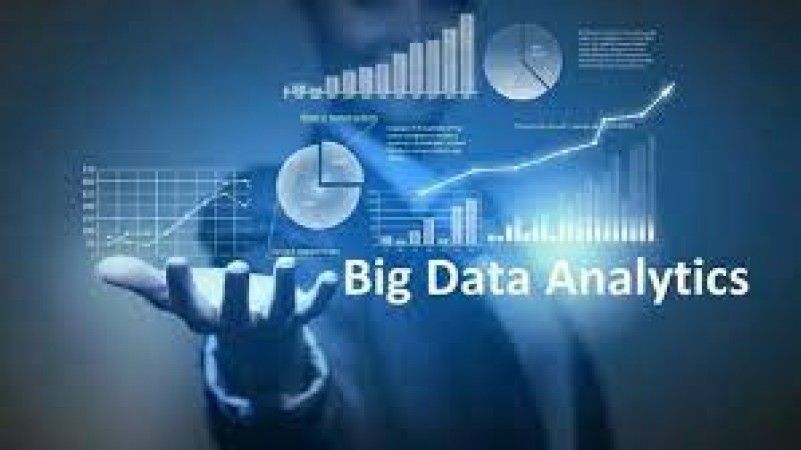
In today's digital age, data has become the lifeblood of industries worldwide. With the rise of technology and interconnected devices, the volume of data generated has skyrocketed, leading to the emergence of big data analytics. This revolutionary field enables businesses to extract valuable insights from vast datasets, empowering them to make more informed decisions and gain a competitive edge in the market. In this article, we will explore the fascinating world of big data analytics in industrial decision-making. From understanding its concepts to practical applications, we will delve into the significance of leveraging data for better outcomes. So, fasten your seatbelts as we embark on a journey to discover the transformative impact of big data analytics in industrial settings.
Big Data Analytics in Industrial Decision-Making: Unraveling the Potential
Data analysis has been a fundamental aspect of decision-making for centuries. However, traditional methods were limited by the volume, variety, and velocity of data. With the advent of big data analytics, these limitations have been shattered, giving rise to more efficient and insightful decision-making processes.
1. Understanding Big Data Analytics
At its core, big data analytics involves the examination of large and complex datasets to uncover patterns, trends, and correlations that can drive actionable insights. By employing advanced algorithms and tools, businesses can process both structured and unstructured data, including text, images, videos, and sensor data.
2. The Role of Data in Industrial Decision-Making
In industrial settings, decisions can impact productivity, efficiency, and overall performance. By harnessing the power of big data analytics, industries can optimize processes, predict maintenance needs, reduce downtime, and improve product quality.
3. Key Components of Big Data Analytics
Big data analytics comprises various components, including data collection, storage, processing, and analysis. Additionally, data visualization plays a crucial role in presenting complex findings in a comprehensible manner.
4. Challenges and Solutions
While big data analytics offers tremendous opportunities, it also comes with challenges, such as data security, privacy, and data silos. These hurdles can be overcome through robust data governance, advanced security measures, and integrated data platforms.
Applications of Big Data Analytics in Industrial Decision-Making
5. Predictive Maintenance: Minimizing Downtime
Predictive maintenance is a game-changer for industries. By leveraging data from sensors and equipment, businesses can anticipate maintenance needs, schedule repairs proactively, and reduce unplanned downtime, ultimately saving costs and improving productivity.
6. Quality Control and Defect Detection
Data analytics can help identify patterns related to product defects and quality issues. By analyzing production data, businesses can spot anomalies early, rectify problems, and enhance product quality, resulting in higher customer satisfaction.
7. Supply Chain Optimization
Optimizing the supply chain is critical for maintaining a competitive edge. Big data analytics allows businesses to analyze supply chain data, track inventory levels, forecast demand, and identify potential bottlenecks, leading to more efficient operations.
8. Energy Management and Sustainability
Industries consume vast amounts of energy. Big data analytics can assist in optimizing energy usage, reducing waste, and achieving sustainability goals, thereby contributing to a greener and more eco-friendly future.
9. Customer Insights and Personalization
Understanding customer preferences and behavior is crucial for any business. By analyzing customer data, industries can offer personalized experiences, targeted marketing campaigns, and improved customer satisfaction.
Leveraging Artificial Intelligence in Industrial Decision-Making
10. The Synergy of Big Data and Artificial Intelligence
Big data analytics and artificial intelligence (AI) are a powerful combination. AI algorithms can analyze vast datasets at incredible speeds, uncovering valuable insights that humans may miss, and enabling more accurate and data-driven decisions.
11. Machine Learning for Predictive Analytics
Machine learning algorithms can detect patterns and trends from historical data, enabling industries to predict outcomes, optimize processes, and make informed decisions with higher accuracy.
12. Natural Language Processing (NLP) in Industrial Data
NLP empowers machines to understand and interpret human language, facilitating interactions with data more naturally and efficiently. In industrial decision-making, NLP can improve data accessibility and analysis.
13. Computer Vision and Image Analysis
Computer vision enables machines to interpret visual data, such as images and videos. Industries can utilize computer vision for quality control, defect detection, and real-time monitoring of production processes.
Ensuring Data Security and Privacy in Industrial Settings
14. Securing Industrial Data
As data becomes more valuable, it becomes an attractive target for cyberattacks. Industries must implement robust cybersecurity measures to protect sensitive data from unauthorized access and potential breaches.
15. Privacy Considerations in Data Analytics
Compliance with data privacy regulations is essential. Industries must ensure they handle data responsibly, respecting the privacy rights of individuals and adhering to relevant data protection laws.
Building a Data-Driven Culture in Industries
16. Fostering Data Literacy
To harness the full potential of big data analytics, industries need to foster data literacy among their workforce. Providing employees with data analysis skills empowers them to make data-driven decisions at all levels.
17. Overcoming Resistance to Change
Implementing data-driven practices may face resistance from employees accustomed to traditional decision-making methods. By promoting the benefits of data-driven decisions, businesses can ease the transition and foster a culture of innovation.
The Future of Big Data Analytics in Industrial Decision-Making
18. Advancements in Technology
The field of big data analytics continues to evolve rapidly, with advancements in AI, machine learning, and data processing technologies. The future holds even more sophisticated tools and techniques for data analysis.
19. Integration with the Internet of Things (IoT)
The integration of big data analytics with IoT devices will create a highly interconnected ecosystem where machines communicate with each other, providing real-time data for more informed decision-making.
20. Embracing Industry 4.0
Industry 4.0 represents the integration of digital technologies into industrial processes. Big data analytics will play a pivotal role in this revolution, driving efficiency, automation, and smart decision-making.
F1 Commision to let the tires do the work being assigned as this might create a conflict
Fernando Alonso Celebrating his 42th Birthday on the Raceway with his Crew
Stan Wawrinka Triumphs in Thrilling Quarter-Final Clash at Croatia Open